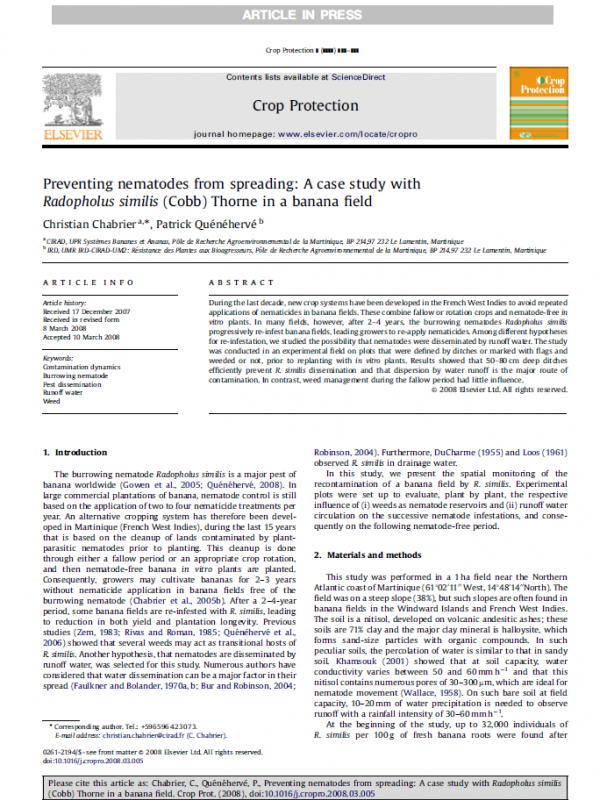
During the last decade, newcrop systems have been developed in the FrenchWest Indies to avoid repeated applications of nematicides in banana fields. These combine fallow or rotation crops and nematode-free in vitro plants. In many fields, however, after 2-4 years, the burrowing nematodes Radopholus similis progressively re-infest banana fields, leading growers to re-apply nematicides. Among different hypotheses for re-infestation, we studied the possibility that nematodes were disseminated by runoff water. The study was conducted in an experimental field on plots that were defined by ditches or marked with flags and weeded or not, prior to replanting with in vitro plants. Results showed that 50-80 cm deep ditches efficiently prevent R. similis dissemination and that dispersion by water runoff is the major route of contamination. In contrast, weed management during the fallow period had little influence. (Résumé d'auteur)